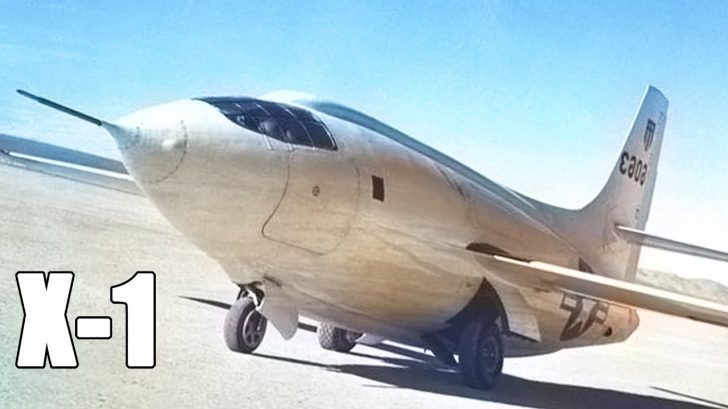Though it might look “plain and simple”, this aircraft is considered to be one of the most important aircraft in the history of aeronautics. Of course, we are talking about the Bell X-1. Here are ten things you should know about this “boring” plane:
1. First aircraft to cross the sound barrier
The X-1 was developed specifically to break the sound barrier – and that it did. Chuck Yeager became the first man to break the barrier on October 14, 1947, reaching Mach 1.06. This flight was the aircraft’s 50th test flight at that point.
2. First experimental aircraft in NASA’s X-Plane Series
This aircraft was the first of the X-planes, joining the likes of the X-13 Vertijet, X-35s, X-51 Waverider, Bell X-14, and many more. The X-plane series are experimental aircraft and rockets used to evaluate new technologies and aerodynamic concepts.
3. Dropped at a high altitude from another aircraft
It was initially planned for the XS-1 to become a fighter. Therefore, it was expected that the aircraft would take off from the ground. However, the end of the war meant that the B-29 Superfortress would be available to carry it into the air. With no war to worry about, Bell decided to use B-29s to carry the X-1 and drop it at around 29,000 feet.
4. Its design was inspired by a 50-cal BMG bullet
You’re not wrong if you thought that it looked similar to a bullet. The X-1’s shape closely resembles a Browning .50-cal machine gun bullet. This decision was made because these bullets were known to be stable in supersonic flight.
5. The cockpit isn’t that comfortable
If you shape an aircraft like a bullet, then you’ll probably have a steep and small cockpit. Its pilot was seated behind a sloped, framed window with no ejection seat available. In fact, pilots actually complained about the shape of the nose, claiming it made it hard to look out during flight and landing. It got so bad that pilots entirely depended on the aircraft’s instruments during climbs.
6. Powered by the XLR 11-RM-3
X-1s are powered by the powerful Reaction motors XLR 11-RM-3 rocket engine. This 4-chamber liquid-fuelled engine is capable of producing 6,000 lbs of thrust. XLRs were one of the most robust engines available at the time. Its last variant, the X-1E, was fitted with an RMI LR-8-RM-5 engine with almost the same output.
7. Flew for the first time on January 19th, 1946
Jack Woolams became the first person to fly the XS-1 version of the aircraft. He would complete nine more glide-flights by getting dropped from a B-29 at 29,000 ft.
8. Five different versions were developed
One of its versions, the Bell X-1A, achieved a new airspeed record of Mach 2.44 with Chuck Yeager behind the controls. Its B variant had aerodynamic heating for thermal research and was the first plane to fly with a sophisticated control system. The X-1C was intended to test weapons at high transonic and supersonic speeds but was later canceled in its mockup stage. Meanwhile, its D and E variant had even better designs but would later be destroyed after rounds of flight tests.
9. Grealty facilitated the development of NASA’s Space Program
Procedures developed by NACA during the X01 trials helped in developing NASA’s Space Program in the 1960s.
10. Chuck Yeager’s X-1 is currently displayed at the National Air and Space Museum in Washington
Yeager’s original Bell X-1, named Glamorous Glennis, is currently housed in the Milestones of Flight gallery of the museum. Alongside the X01 are the Spirit of St. Louis (famous for being the first solo non-stop transatlantic flight from New York to Paris) and SpaceShipOne.



